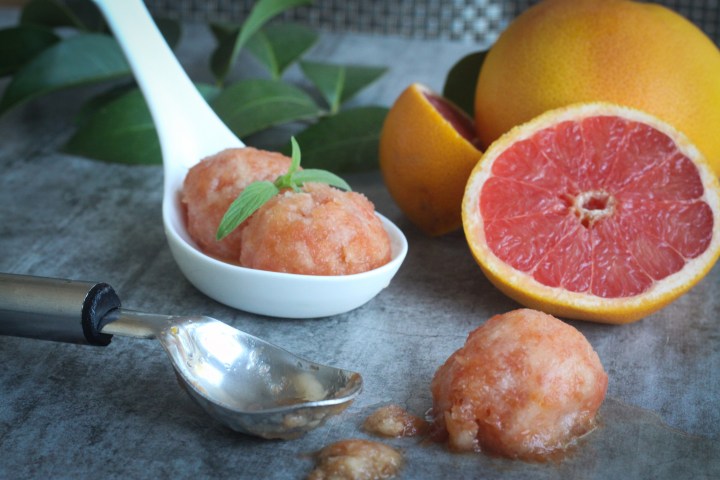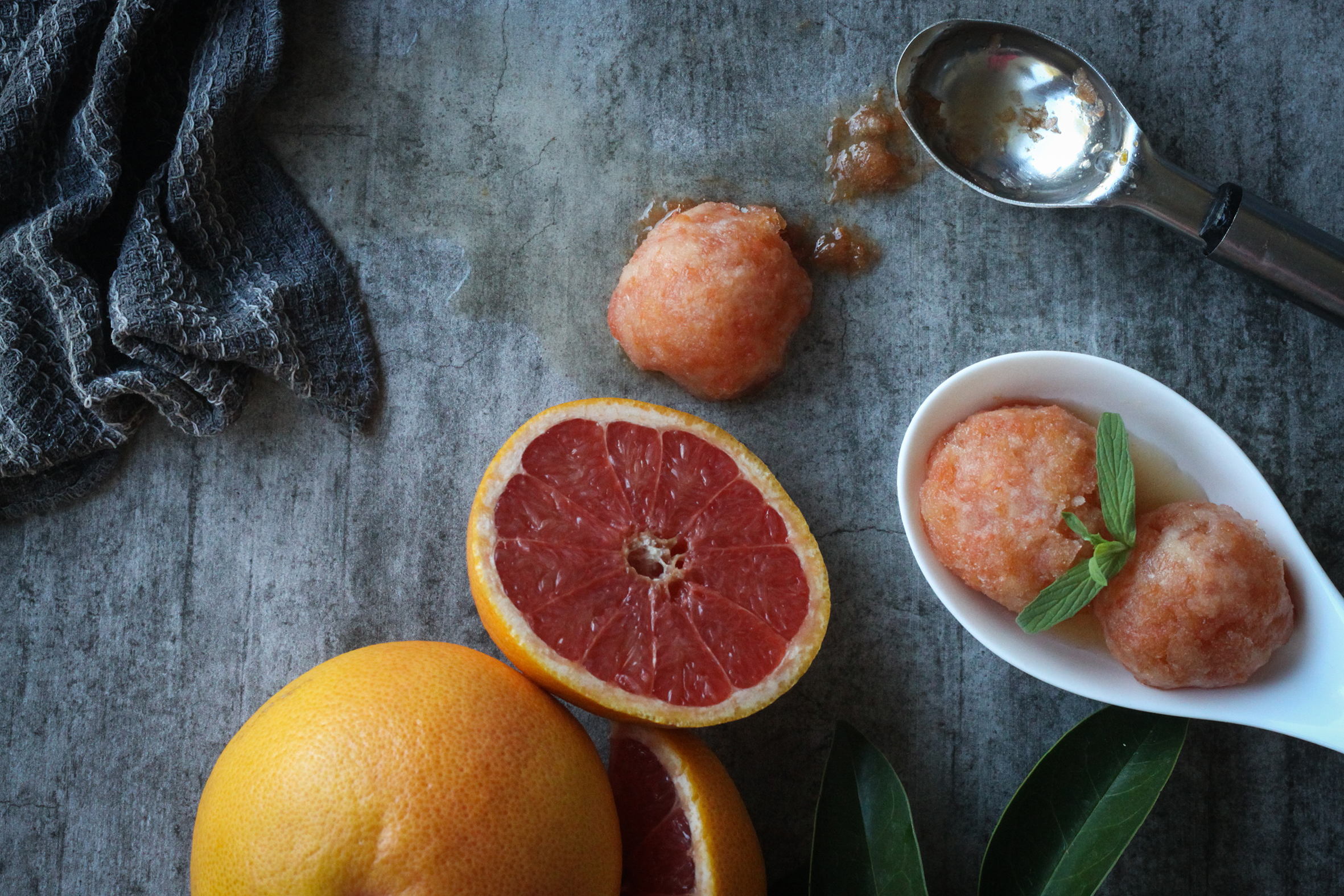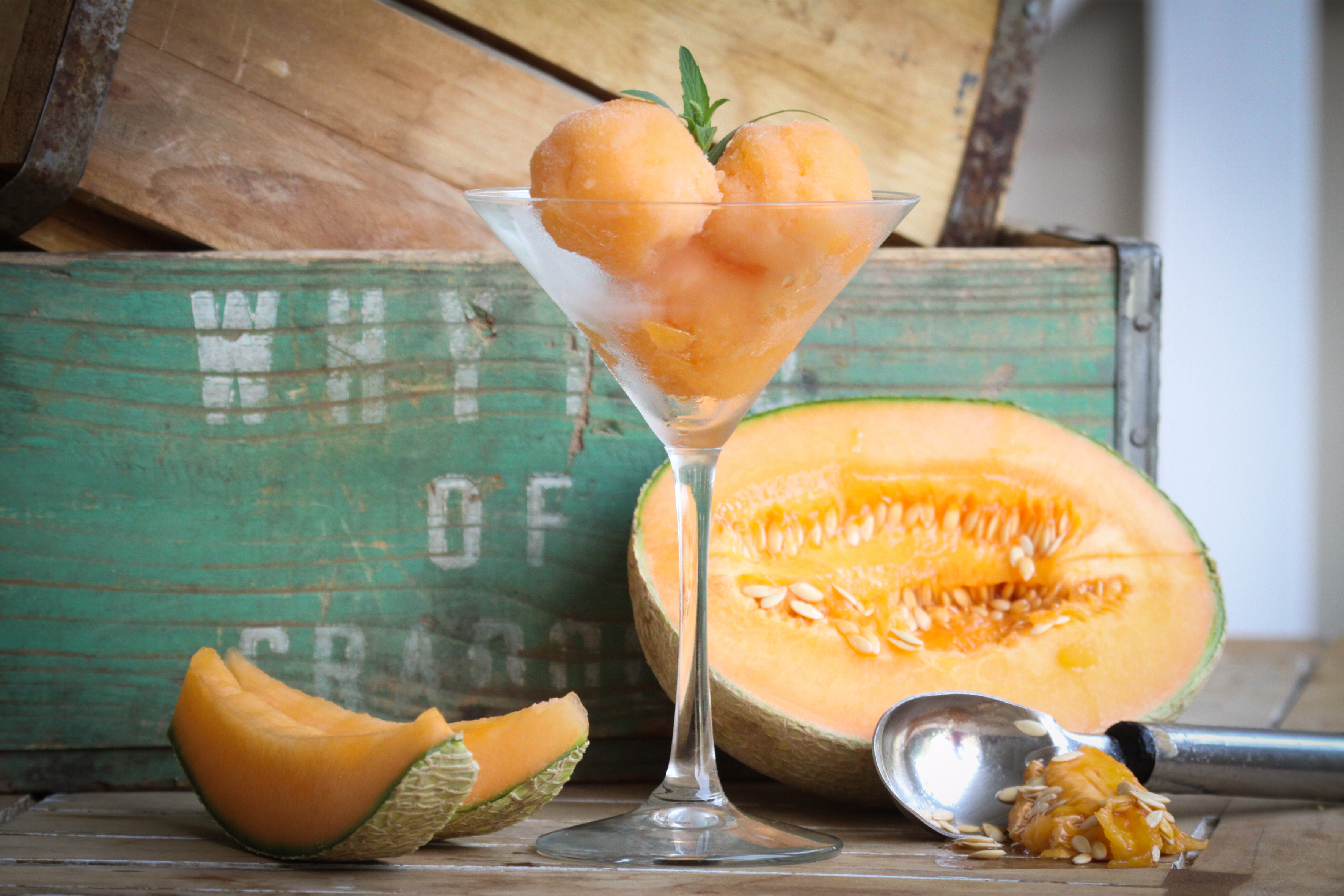CHILLED RECIPES
Thinking Pink & Icily Cool

Sorbet, the perfect food for drought conditions or a super-hot summer. Early sorbet recipes included, would you believe, snow. Actual snow. But sorbets preceded ice creams in culinary history. And adding a little liqueur, or a brandy or Cognac, or in the case of the recipe below, Pimms No 1, that drink redolent of landscaped English lawns and the tap of ball on willow, can lend a sorbet both colour and depth of flavour.
What is Pimms No 1? It’s gin – who knew? – infused with botanicals, so it’s super on-trend, if that’s your thing. It also contains caramelised orange – hence that rich amber colour – and subtle spicing. Turns out there are Pimms Numbers 2, 3, 4, 5 and 6 too, based respectively on whiskey, brandy, rum, rye whiskey and vodka. Pimms is one of those drinks you leave forgotten, partly consumed, in the liquor cabinet for months or even years, but those are just the drinks you might have use for when making a sorbet.
I’d come across a David Leibowitz recipe for pink grapefruit sorbet enhanced with a little Campari (characterised as bitters), but when I found some forgotten Pimms the riddle was solved. I had a taste and imagined it with grapefruit, and reckoned it would work. It decidedly does.
Sorbets can be super simple or somewhat unnecessarily complicated. Larousse Gastronomique tells us that sorbets were originally made of “fruit, honey, aromatic substances and snow” and that the Chinese introduced the frozen dessert to Persians and Arabs (the Arab world being so vast and varied, that’s too much of a generalisation, but Larousse doesn’t always get these things right), who in turn introduced them to Italians. Larousse also refers to the tradition of adding Italian meringue to a sorbet, perhaps in the final freezing. I rather like the addition of beaten egg to a partly frozen sorbet, but have not done so with the pair below.
Many sorbets are made with fruit juice (and pulp), sugar and water. But if the fruit is loaded with juice, there may be no need for extra water. In the case of the two sorbets below, there was plenty of grapefruit juice and especially spanspek (canteloupe) juice. So I simply used their juices and pulp, with the addition of the aforementioned Pimms N 1 in the grapefruit sorbet.
In any event, if you live in a dire drought region as I do in the Eastern Cape Midlands, using the fruit’s own juices means wasting no water at all.
Pink Grapefruit & Pimms No 1 sorbet

Pink Grapefruit & Pimms Sorbet. Photo: Louis Pieterse
Juice and cells of 4 very ripe pink grapefruit
Grated zest of 1 pink grapefruit
1 cup/ 250ml sugar
1/3 cup/ 80ml Pimms No 1
Halve grapefruit and squeeze juice into a bowl through a fine sieve.
Use your thumbs to work the cells out of each half into the bowl. Avoid the membranes being added.
Add the zest and pour into a heavy-bottomed pot.
Add sugar and Pimms and bring to a gentle simmer. Turn off the heat.
When cooled to room temperature, pour into a suitable freezing dish with a lid. Freeze for 4 or 5 hours. After 3 hours or so, remove from freezer and scrape it all around, then refreeze.
Spanspek sorbet

Photo: Louis Pieterse
Juice and pulp of 1 large, super-ripe spanspek (cantaloupe)
1 cup/ 250ml sugar
That’s it. No need for extra water as long as the spanspek is at peak ripeness, and this is just the right time of year for that.
Halve the spanspek, being careful to keep it in a position that prevents any of its juice running away. Best to do it over a large sieve which is over a large bowl.
Scoop out the seeds into the sieve, so that the juices run into the bowl below.
Transfer to a heavy-bottomed pot over a low heat.
Use a dessert spoon to scrape out the lovely orange flesh into the pot. This is preferable to cutting the flesh into chunks; the scraped-out strips will disintegrate into the juices much quicker.
Add a cup of sugar and bring to a gentle bubble. Turn off the heat and allow to cool.
Pour into a suitable freeing dish with a lid. Freeze for 4 or 5 hours. After 3 hours or so, remove from freezer and scrape it all around, then refreeze. DM















 Become an Insider
Become an Insider